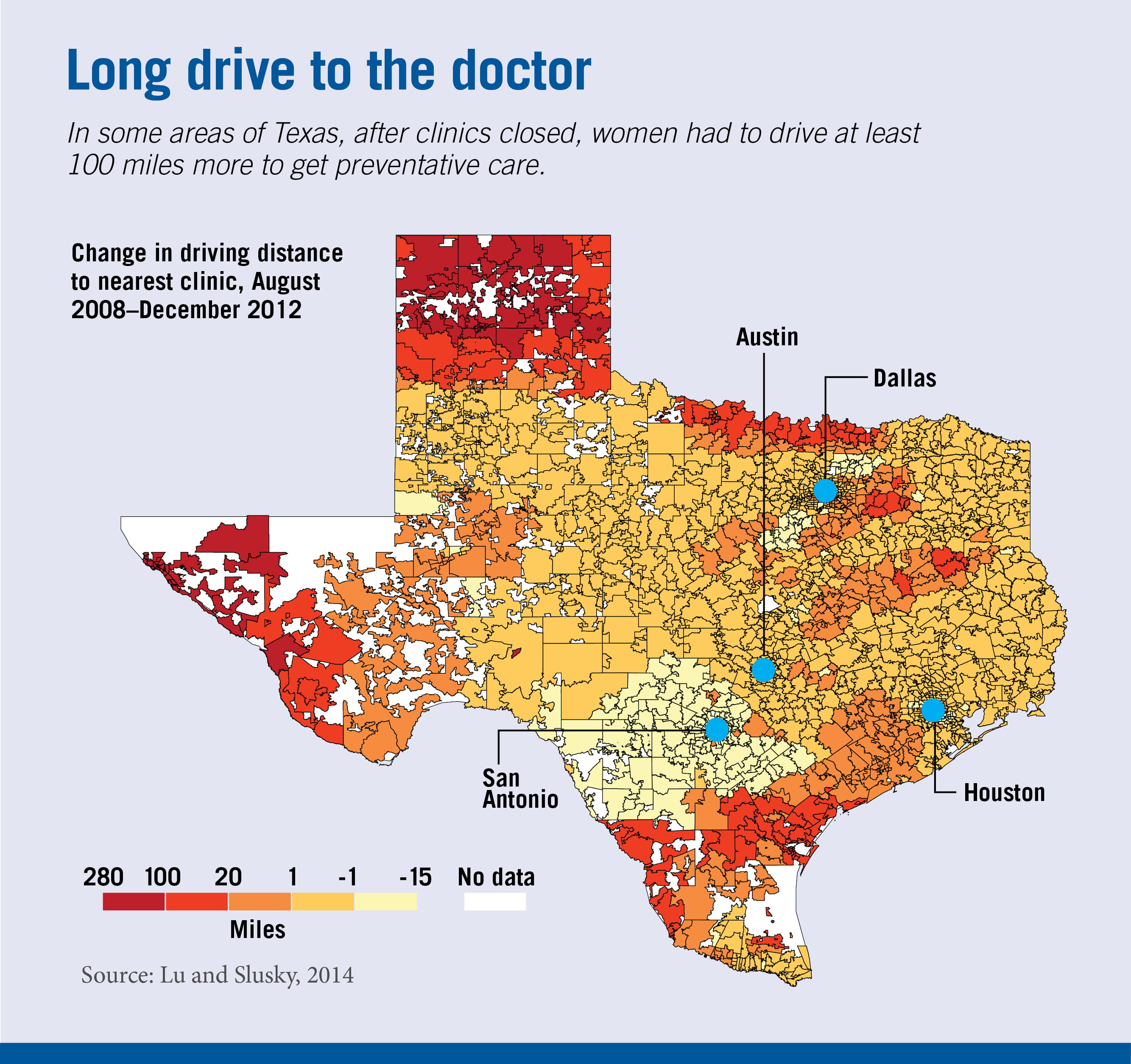“The relatively larger reductions in breast cancer screening that we find among low-education women would exacerbate longstanding socioeconomic disparities in screening and survival,” the authors write.
The researchers used data from the Centers for Disease Control and Prevention Behavioral Risk Factor Surveillance System surveys conducted in 2008, 2010, and 2012, in which women reported whether they had undergone specified procedures within the past year. The authors then limited the sample to women aged 18–44 and calculated the distance from each woman’s zip code of residence to the nearest clinic. The farther women had to travel to reach a clinic, the more dramatic the drop in use of preventive care during the 2007–12 period.
The authors focused on Texas and Wisconsin, which the researchers note are “geographically and culturally distinct from each other.”
They examine clinic location data for a large, national network of clinics from 2007 to 2012, during which time Texas saw a 25% decrease in its number of clinics in the network. The authors note that the vast majority of closures there resulted from two pieces of legislation. In 2011, the Texas legislature cut the family-planning budget of the Department of State Health Services by two-thirds. The same year, state legislation barred networks affiliated with abortion providers from participating in the Texas Women’s Health Program, which serves the poor. As this constituted discrimination among qualified providers, the federal government stopped contributing to the program.
In Wisconsin, Governor Scott Walker in 2011 signed a budget that withheld funding to several women’s health centers, disproportionally affecting organizations associated with abortion. The authors observed areas where women experienced increases of 20–45 miles in driving distance to the nearest clinic.
The authors find that low-income women disproportionately suffered from clinic closures. Respondents living in areas that saw more dramatic increases in distance to the nearest clinic tended to be poorer, younger, less educated, and nonwhite. Also poor women’s preventive-care-utilization rates were more strongly impacted by increases in distance, likely because these women had fewer alternative options for care and less flexible schedules.
The authors write that if the lack of preventive measures results in breast or cervical cancers going undetected until later stages, these same women are likely to rely on state resources for care. States that implement antiabortion legislation may set themselves up for future costs, and exacerbate existing socioeconomic disparities in cancer screening and survival rates.

